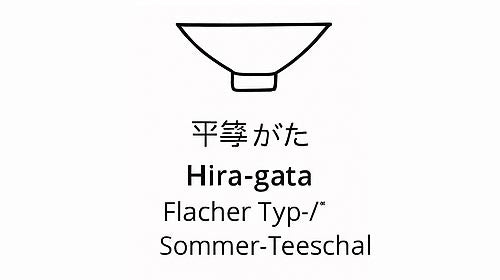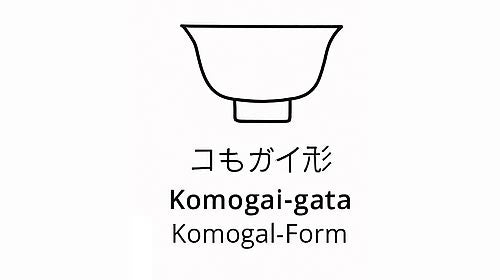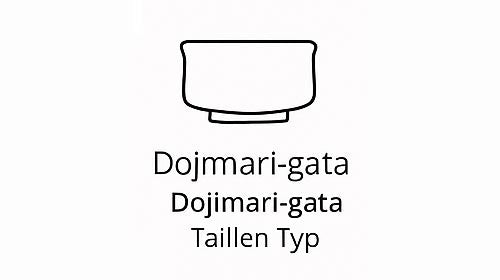The Hira-gata chawan is one of the clearest, most open, and yet most elegant bowl shapes in the Japanese tea ceremony. Its name is a combination of "Hira" (平), meaning "flat" or "even," and "gata" (形), meaning "shape." It is the bowl of summer—wide open, bright, breathing. Its shape evokes an invitation to lightness.
Shape & Proportion
The Hira-gata is significantly flatter than most other chawan . Its diameter is large, its walls low, and the upper rim is usually slightly drawn out. The interior surface is almost horizontal, giving the bowl a calm, spacious character.
This wide surface allows for a very even distribution of the tea foam in Usucha. At the same time, the tea cools down more quickly—a feature that is particularly pleasant during the hot months.
Historical background
Hiragata developed as a specific summer form in the late Edo period (18th–19th centuries). It was introduced, particularly in Kyoto and Seto, by ceramic masters who experimented with seasonal moods. The idea was to adapt the shape of the bowl not only functionally but also atmospherically to the respective season—a central element of the tea tradition.
In contrast to the tall, cylindrical Tsutsu-gata for winter, the flat Hira-gata symbolizes the open sky , light, and breathing. It is preferred for outdoor summer ceremonies or when the Chashitsu is open.
Glaze & Production
-
Popular are light glazes such as Ao-Hagi (bluish), Shino (cream-colored with iron spots) or Kohiki (white engobe with transparency)
-
Often manufactured in Seto , Mashiko or modern workshops in Gifu
-
The surfaces are usually smooth, shiny or slightly craquelured – matching the light character of the bowl
The kōdai (foot ring) is usually flat and wide, sometimes slightly rolled up to ensure stability despite the low height.
Function & Use
The Hira-gata is ideal for usucha . The wide interior allows for airy, fast whipping. The flat design ensures that the foam remains beautifully visible—an aesthetic delight.
But its openness also has a ritual component: it shows the contents, leaving nothing hidden – an attitude that is associated with summer, hospitality and transparency.
Typical application situations:
-
Summer tea ceremonies , often with floral Chabana
-
In the Chashitsu with the Shōji (paper sliding door) open
-
At informal gatherings with a light atmosphere
Symbolism & Effect
The Hira-gata represents openness, lightness, and the visible. It contrasts with the depth of the Sugi-nari or Tsutsu-gata. It invites you not only to drink matcha, but to experience it with your eyes – flat, calm, clear.
It fits the Japanese term "hare" (晴れ) – cheerful weather, public moment, friendly presence. It evokes the beauty of a summer morning.




Leave a comment
This site is protected by hCaptcha and the hCaptcha Privacy Policy and Terms of Service apply.